Complicating Notions of Womanhood
Nabra Nelson: Salaam alaikum. Welcome to Kunafa and Shay, a podcast produced for HowlRound Theatre Commons, a free and open platform for theatremakers worldwide. Kunafa and Shay discusses and analyzes contemporary and historical Middle Eastern and North African, or MENA, theatre from across the region.
Marina J. Bergenstock: I’m Marina.
Nabra: And I’m Nabra.
Marina: And we’re your hosts.
Nabra: This season, we’ll be focusing on twenty-first-century MENA theatre, highlighting contemporary MENA plays and playwrights, spotlighting international community-engaged work in the Arab world, and pondering the present and future of MENA theatre in the US. Our name, Kunafa and Shay, invites you into the discussion in the best way we know how, with complex and delicious sweets like kunafa and perfectly warm tea or, in Arabic, shay.
Marina: Kunafa and Shay is a place to share experiences, ideas, and sometimes to engage with our differences. In each country in the Arab world, you’ll find kunafa made differently. In that way, we also lean into the diversity, complexity, and robust flavors of MENA theatre. We bring our own perspectives, research, and special guests in order to start a dialogue and encourage further learning and discussion.
Nabra: Yalla. Grab your tea. The shay is just right.
Today, we are talking about how MENA women’s perspectives inherently and intentionally complicate notions of womanhood through storytelling and retelling. We will examine how two women playwrights have reinterpreted Western classic stories through a MENA lens, discussing Hanane Hajj Ali’s Jogging: Theatre in Progress and Heather Raffo’s Noura. Jogging reinterprets the story of Medea, while Noura is a loose adaptation of Henrik Ibsen’s A Doll’s House. We acknowledge that this framing still, unfortunately, centers Western stories. But Western classics are inescapable. We see constant adaptations so often by Western playwrights and usually also by men. So we want to examine what it looks like when Arab women take on these adaptations. The two examples we’ll talk about set the stage for deepening understanding on how Arab women perspectives enrich Western narratives toward making and appreciating our own narratives and classic plays.
Marina: When we think of what it means to be a woman we know the answer is so vast and doesn’t have to fit into any existing binary. However, there are tropes that are utilized onstage that get repeated, like the ingenue, which is the overly innocent girl; the shrew, usually a nagging angry woman; the damsel in distress; the fat friend; the perfect wife; the girl next door; the mother hen; and the manic pixie dream girl, who exists to inspire men through how quirky she is, just to name a few. When I look at this list though, I realized that even these roles that I’m describing are potentially overdone tropes that usually are not given to MENA women. Some of the MENA tropes seem to be devout Muslim women, woman who wears hijab—but when she faces pressure from the outside world removes her hijab to prove to Westerners that she isn’t weak—the exotic woman who is maybe also a belly dancer, the oppressed Arab woman, and probably plenty more. What does it mean to be a woman on stage? More specifically, what does it mean to be a MENA woman onstage?
Nabra: We also have to look at who is writing these plays. Some of the writers are, of course, from outside of the MENA community. With some of those, you have to wonder if they even know anyone from the MENA community when they’re writing it. But that’s a whole other topic. But sometimes there are traps that writers of color are pulled into by theatres who intimate that they’ll only produce their work if they do X, Y, or Z. In a recent talk that MENA playwright Betty Shamieh did, she talked about how, because she refuses to give Western audiences the script they want about MENA folks, often her plays go unproduced. She joked that if she wrote a play about honor killings, though, they would eat that right up. We all know that Western theatre loves trauma porn.
Up to this point, we’ve been talking about women as they’re written in scripts, but this also obviously ties into casting.
In previous podcasts we’ve talked about how we won’t dwell too much on casting because that could be its own entire podcast series. But when you see a MENA actress in a role written for a non-MENA character, especially a white character, that culture history, lived background, lived experience inherently brings depth to the roles. I mean that from two perspectives. From the actor’s perspective, herself as a person who has to navigate womanhood differently by virtue of the culture she comes from, whether we like it or not. And from the audience’s perspective as—US audiences in this case—where MENA bodies are automatically politicized.
Marina: And, of course, the writing and casting can be either a beautiful union or create a problematic production. Remember the trope I mentioned earlier about the hijabi woman who is seen as weak for wearing the hijab and ends up taking it off to somehow prove she isn’t an oppressed woman?
One of the problems with this trope is that it means no hijabi actress could actually authentically play that role because of that moment. We can debate what “authenticity” means all day long, but there are so few roles specifically written for hijabi actors; it’s hard to see the same trope be repeated and repeated.
Nabra: All this to say, as we’ve talked about before, representing people on stage is complicated business. But now that we’ve talked about some of these aspects of MENA womanhood in general, we want to talk more specifically about these two examples. So as I mentioned before, the first piece we’ll talk about is Lebanese playwright Hanane Hajj Ali’s play Jogging: Theatre in Progress. We have to say a huge thank you to Hanane because her script is currently unpublished in the US, but we had seen the production advertised at several theatres before COVID.
When she won the Gilder/Coigney International Theatre Award we got to see clips of it, too, and really wanted to feature it. When we reached out to her she graciously allowed us to read the script to talk about it in today’s episode.
Marina: Shukran jazilan, Hanane. Jogging reinterprets the story of Medea. So for those of you who haven’t recently read this ancient Greek tragedy based on the myth of Jason and Medea, here’s a quick plot summary. I would say spoiler alert, but Euripides wrote this play in 431 BCE, so… Okay, so Medea begins way before the play begins. Jason has left his homeland to find the golden fleece, which is in Medea’s homeland. Aphrodite makes Medea fall in love with Jason and then helps him steal the golden fleece. While they’re fleeing, Medea kills her brother to help them get away.
Then her and Jason are hatching other plots to steal rulership from a king and manage to burn some bridges there too. So then they flee into exile and that’s where this play Medea begins. At the top we see Medea’s nurse sort of bemoaning Medea’s fate because her husband, Jason, has just abandoned her and her two young children to marry the princess, the daughter of Creon, who’s the king of Corinth. Medea is infuriated by this abandoning, after all she’s just given up, literally everything, has made it so that she can’t return to most of these places and has come here with him for her and her children. So long story short, she uses her children to kill Jason’s fiancé, and then she kills them too. Fun, right? So there are so many things that we could take away from this, but the first is that Medea would have been shocking because women are supposed to be utterly maternal.
What I think is interesting is that this play is so old, as I pointed out, but a research study from 2006 examined more than 250 news reports on maternal infanticide in the US to see how journalists presented these cases in the media. It concluded that women tended to be presented in overly simplistic terms, either as driven to insanity due to caring too much, or as fundamentally heartless. They weren’t looking at all at things like patriarchal or societal factors, or even health factors like postpartum depression, etc. Medea isn’t necessarily irrational or evil, and some claim that the play shines a spotlight on the societal pressures behind motherhood, that her situation is an inevitable result of patriarchal forces in the Greek world where she was dependent on her husband, vulnerable, and easily driven to desperation. The chorus of Corinthian wives at the end seemed to be pretty swayed by her argument, that any of them could find themselves in her position.
We could really debate all day long whether this play is feminist or not. But whether it is or not, people are fascinated by this story, which we see through so many Medea adaptations that exist. For many of them, they actually now center a lot around immigration, really highlighting Medea’s move to a foreign country. There are so many that we could name, but maybe just one quick shout out to Luis Alfaro’s Medea in Los Angeles.
Nabra: So to talk about Jogging, Jogging is a one-woman show that’s played by the playwright, Hanane. She’s also the actress. There are three characters in the play,—Hanane, Yvonne, and Zahra—who of course are all played by her. The play begins with the lines:
We would like to inform you that this play is an illegitimate bastard born of sin, where the thoughts of the actress have become like daughters who get pregnant out of wedlock without a care in the world without having to witness or sign a marriage certificate or obtain an official permit from state security. Whoever feels awkward or shy can leave now and return his or her ticket, which is free anyway.
What a brilliant way to start a play. It really immediately brings us into this raw and truthful and feminist world that she creates. It tells us that we’re about to see women’s truths, the parts of women that we talk about amongst ourselves but have been socialized to be ashamed of. It perfectly segues into the way that Hanane approaches the story of Medea. She tells the story through Medea’s perspective and almost as a parody immediately bringing humanity to a gruesome story in which Medea murders a whole bunch of people. She then tells the story of Yvonne, a Lebanese citizen who killed herself and her three daughters with a poisoned fruit salad in 2009. She first imagines Yvonne’s murder/suicide note to be the same as Virginia Woolf’s who killed herself when she recognized her mental illness was going to overtake her. Virginia Woolf chose to die in what she described as the happiest times of her life and free her husband from the hardships to come.
But then the playwright notes that imagining Yvonne’s suicide note in this manner serves to dismiss the idea that such an act could happen in our town without a mental illness to blame it on. Instead the Shakespeare quote, “Something’s rotten in the state of Denmark,” replays in her head in relation to Lebanon. Through the rest of the play she contextualizes the story of Medea, or similar stories, through the lens of a modern-day Lebanese woman. What could lead a modern day Lebanese woman to commit murder or suicide? Or a boy to walk into war that is a death wish? Perhaps the answer is the state of the world and the injustices enacted on people, especially women. Sacrificing children is not new, or especially unusual, in an unjust world. Take sending sons to war as an example. But these sacrifices do not usually occur in the manner in which they do in Medea.
As the character says, “A mother could not kill her children like that no matter what Euripides and the gods who made him say.” Though directly after this proclamation, she shares that she grappled with wishing her seven-year-old son would die to end his suffering when he had cancer. Indeed, this is a heartbreaking and complex parallel.
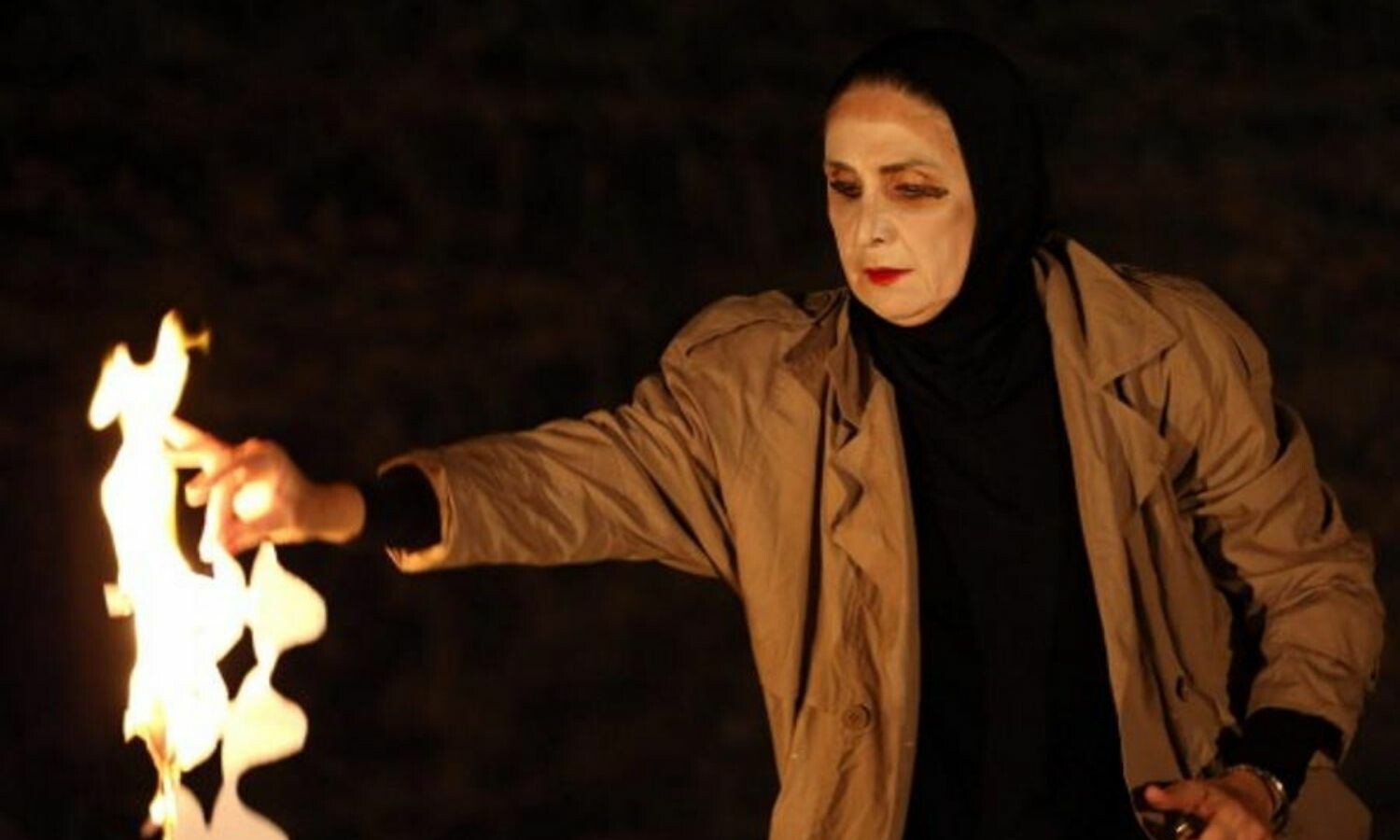
Hanane Hajj Ali in Jogging: Theatre in Progress. Credits: American Theatre.
Marina: Hanane worked on Jogging over five years, integrating complex sound, lights, projections, and different theatrical forms. Ultimately she decided to stage it in a blank space with just her and the audience. Fittingly, the subtitle of the play is Theatre in Progress. She ultimately chose this staging because her goal was to reach marginalized populations and that was the most successful way to share the story. She also recognizes that this is the essential form of theatre. It is amazing how her intended audience, her intended community, shaped her play just by her keeping them in mind, by remembering them.
This is perhaps a difference between the classic patriarchal and matriarchal ways of creating art. With the patriarchal, the art-maker is at the center of storytelling, the apex of power, and the one who controls the narrative. In a more matriarchal approach the family, or in this case the community, is the center. The way that Hanane Hajj Ali was able to stage and tour the production is also an indication of the resilience and power of Middle Eastern theatre, specifically Lebanese theatre in this case. She did not get permission from the government to perform her play so she could not perform it at any theatres. She had to craft it for alternate spaces. She ended up performing it over two hundred times in Lebanon. While the play usually occurred in theatre-like or multipurpose spaces, around the Arab Spring she started to hold performance events in the streets of Beirut.
These would often take the form of community-engaged protests of sorts—political street theatre that engaged the public, including bystanders, passersby, and sometimes people on their own balconies, in dialogue. During quarantine, for example, she went around asking for people’s stories in the streets of Beirut. About this work she says, “Thanks to the revolution Beirut has become the theatre venue I had always hoped for, one that is as big as the city itself. For me, theatre must resume its primary role to be an agora for citizens to meet together and to demand to tackle the critical issues of their lives.”
Nabra: While hearing from Hanane Hajj Ali at a virtual event that I attended and reading her play in the context of this episode, these questions floated through my mind: Does being a revolutionary complicate modern Western notions of Arab womanhood? Is making an entire city your space, your theatre space, complicating notions of womanhood? Is a hijabi woman jogging through the streets of Beirut complicating notions of womanhood?
Unfortunately, I think the answer to all these questions is yes. Though, to me as an Arab woman, all of these qualities and acts seem obvious. But our existence is powerful and when we thrive, it is a revolution. A quote I love from Hanane that lives in this complexity is, “Having chosen to be an actress with a scarf unveils my personality and makes it transparent.” How simultaneously complicating and obvious that notion is, wearing the hijab is not part of Hanane’s costume design or an integral part of the script, it’s just what she wears every day. But it’s still a choice that is interpreted by an audience. Again, going into the politicization of Arab and Muslim bodies. But she’s thoughtful about this choice and how it illuminates who she is as a person and artist, pointing out how it uncovers rather than covers.
Marina: Yes. I love that quote. So let’s head now into Heather Raffo’s Noura. The title refers to the titular character whose name is borrowed from the main character of Henrik Ibsen’s A Doll’s House. As many know, A Doll’s House is widely considered a feminist play about a woman who leaves her oppressive husband. Here’s your quick A Doll’s House summary: Nora is a married woman who seems to be fine playing the “doll” in this house of hers. She doesn’t have control over her finances and fritters away snacks for herself to eat, which her husband teases her about. His views of her are made pretty clear through the infantilizing nicknames he has for her like, “My little skylark, my little squirrel, my pretty little pet.” And the list continues in that fashion. She goes from being a submissive wife and beautiful mother into an independent single woman who’s willing to leave her three children to pursue independence.
The last sound of the play is a door slam as she leaves. It’s become known as the “door slam heard around the world.” So while we wouldn’t necessarily see this as the most feminist play anymore, in 1879 it caused quite the stir. Audiences were supposedly outraged and newspapers were also feeling the same, thinking that this would give women strange ideas and that this could never happen in real life. It could only ever happen on a stage because women wouldn’t be able to survive since they obviously didn’t have access to their own bank accounts, etc. So, I mean, again, we can talk about this at length and, if you’re interested, let me know.
But I am more interested right now in talking about Heather Raffo’s adaptation, Noura. So in talking about why she wrote the adaptation, she says:
The play is not unrelated to the ever-present question I heard talking about in my Brooklyn parenting circles, can women be fully realized in all of their roles? Can they belong equally in each? Or is it inevitable that having a career, being a wife, a mother, a daughter, perhaps to aging parents, that one of these roles will become unsustainable? In the demand of playing roles for so many others is it inevitable that we question who we really are ourselves?
The reason I love this is that it touches on so many of the things that I’ve always questioned about A Doll’s House. So if A Doll’s House is a feminist play for a lot of this piece we still see, I mean, 99 percent of the play is this woman not realizing that she’s living in an oppressive marriage and an oppressive household. Then she finally realizes and she leaves. But you still have to watch her living in this oppressive household for most of this. So Raffo, it seems to be she’s reimagining this piece with a more balanced marriage and incorporating a lot more of the complexities of contemporary women. So there’s a lot more that she’s doing too, but I think those are the important ones to touch on. Like Medea, A Doll’s House has been the subject of many adaptations that seek to first better translate into English from the original, especially the roles of the women that are maybe in some adaptations not translated very well. But the other adaptations include plays like Lucas Hnath’s A Doll’s House Part Two, which takes place in the future, Sarah Ruhl’s In the Next Room, which is technically not an adaptation, it’s a different story, but it feels very much in conversation with these themes, Theresa Rebeck’s A Doll House, and so many more films plays, etc.
Nabra: One of the elements that makes this adaptation different from the others is that Noura is set in twenty-first-century United States. That fact alone raises the question, What does Noura being set in contemporary America say about the state of women’s expectations in the household given that it’s based on a play set in the late 1800s? The family in the play are Christian Iraqi immigrants and the play is set around Christmastime with a big Christmas tree as the centerpiece.
It was inspired in part, it seems, by when ISIS overtook Mosul in 2014 and many Christians felt like Iraq was no longer a place they could safely live. So both plays are family dramas, which by virtue of the play type, they set up this dichotomy of inside the home versus outside the home. The setting is really interesting to examine. The contrast between the two plays are what interests me the most, especially in the two women characters, Noura and Maryam. It was clear to me in reading the play that there was a certain criticism or rejection of Ibsen’s approach to the storytelling. From the playwright’s note, Heather Raffo says:
I was as tired of watching Nora Helmer be the beacon of feminist thought as I was watching, Torvald stand in for a husband. The woman I know don’t run around acting smaller than they are sneaking chocolates and barely parenting their children. Yet women all around me in strong marriages with truly great husbands were drowning. A different conflict between individualism and community was playing out before my eyes, not just as an Arab American, but also as a modern wife and mother.
The two women characters challenged traditional notions of Arab womanhood in many ways. It’s set in an American household, Maryam is pregnant out of wedlock, Noura accepts this person who is pregnant out of wedlock, Maryam is also an entrepreneur and highly independent, and there are open discussions about giving up your baby and making decisions about your body without input from men. Though these topics are complicated because they come from MENA women’s perspectives, they are also not easy topics among women of any background still. While no children are harmed in this play, the complicated feelings the women have around children are reminiscent of Medea, which drives home the idea of how complicated expectations placed upon women can be, especially in regards to children and their own lives.
Marina: One of my things favorite things that Maryam says is, “I never had a father. I’m what everyone’s afraid of, a woman without a guardian. I’m unrestrainable.” The play also explores what it means to be an immigrant, recreating a new home in a different country. American culture is largely based on individualism and Middle Eastern culture tends to pride itself on strong community ties. Memories of home, community, and country are all intertwined. The characters describe the dichotomy of rooted versus running. The play even ends with this line, “I don’t know how to let go and hold on at the same—”
That’s where the blackout happens at the end. But so the rooted verse running, letting go, holding on the struggles that can exist in this way. It’s also interesting to note that as we said, the play is set at Christmastime and Maryam is pregnant. In Arabic, Maryam is also the name of the Virgin Mary, who would have been pregnant with Christ at Christmas. So another interesting parallel that exists. In examining, questioning, and rewriting a Western feminist story told by a white man, Raffo brings the complex truths of being a woman to the forefront, speaking to both Arab and Western audiences. But it is important that she is revealing that Arab immigrant women’s everyday struggles and intimate perspectives are simultaneously similar to and very different from those of non-Arab women. It is exactly that complexity that Arab women expertly bring to their storytelling in the American theatre.
Nabra: We hope to dive more into MENA classics in the next season and always more into MENA women and the incredible work that they’re doing in theatre. But we hope that this deep dive into Noura and Jogging help contextualize the contributions MENA women are bringing to theatre, especially in the Western world, and help to complicate your notions of womanhood.
Marina: Thank you so much for having tea with us. This has been another episode of Kunafa and Shay. We’re your hosts, Marina and Nabra. This podcast is produced as a contribution to HowlRound Theatre Commons. You can find more episodes of this series and other HowlRound podcasts in our feed on iTunes, Google Podcasts, Spotify, and wherever you find podcasts. Be sure to search HowlRound Theatre Commons podcasts and subscribe to receive new episodes. If you loved this podcast, post a rating and write a review on those platforms. This helps other people find us. You can also find a transcript for this episode, along with a lot of other progressive and disruptive content on howlround.com.
Have an idea for an exciting podcast, essay, or TV event the theatre community needs to hear? Visit howlround.com and submit your ideas to the commons. We hope you tune in next time. Thanks for joining us on Kunafa and Shay.
Marina: Yalla, bye.
Nabra: Yalla, bye!

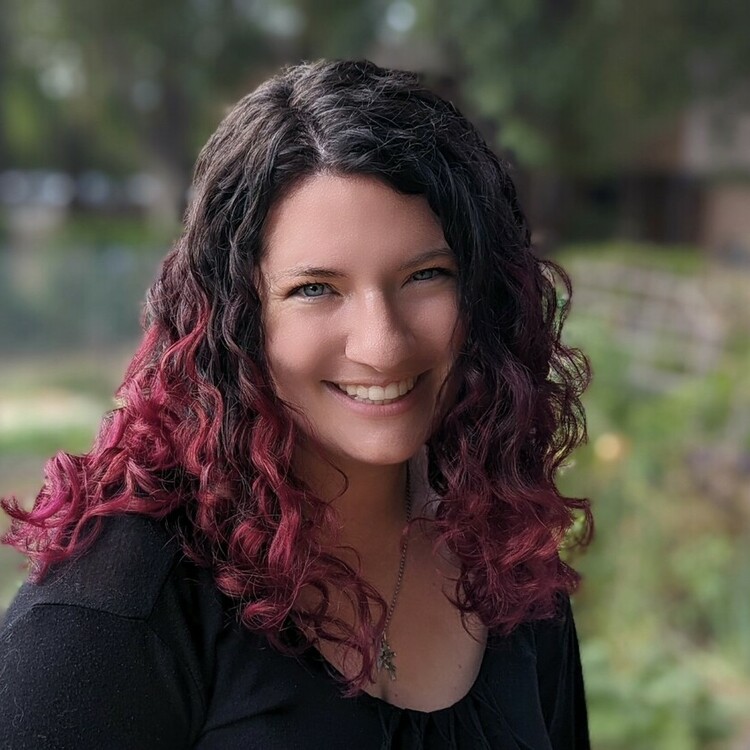
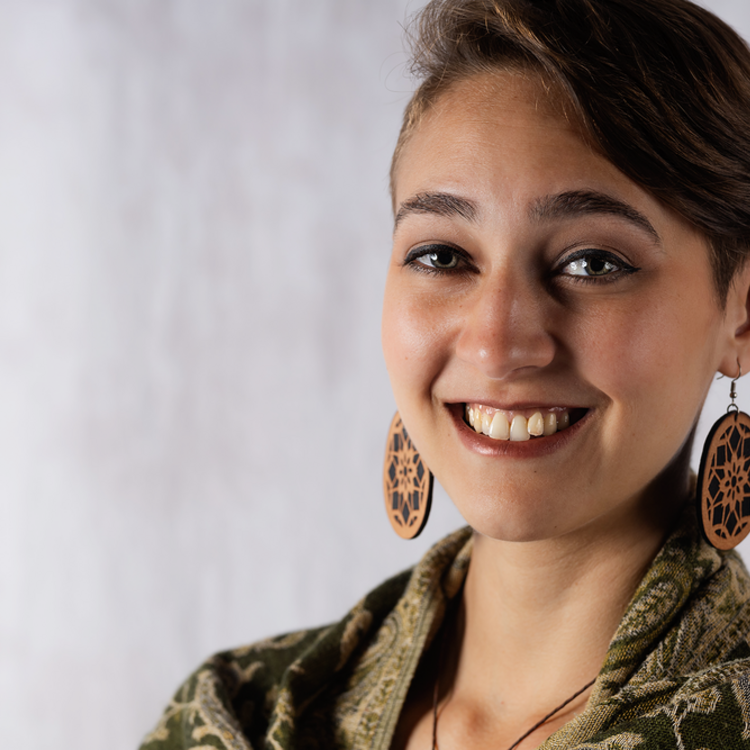
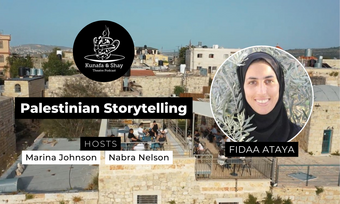



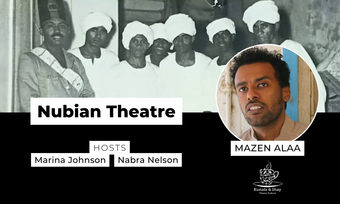

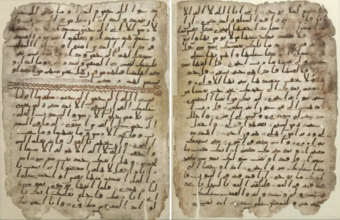

Comments
The article is just the start of the conversation—we want to know what you think about this subject, too! HowlRound is a space for knowledge-sharing, and we welcome spirited, thoughtful, and on-topic dialogue. Find our full comments policy here